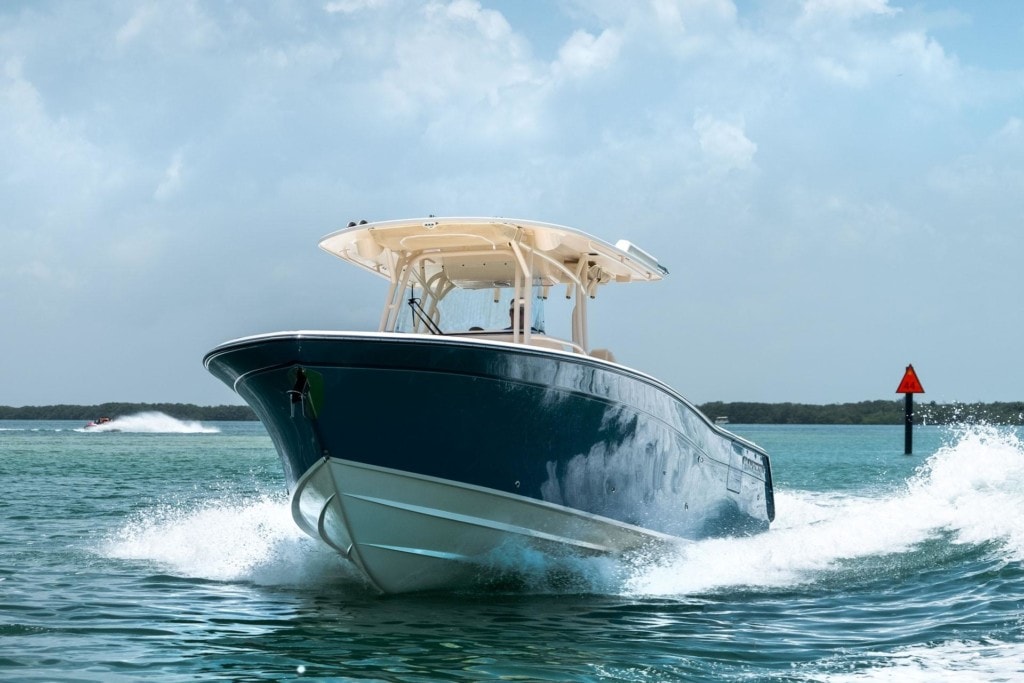Navigating under a bridge in Longboat Key, FL, is a common experience for boaters due to the region’s numerous barrier islands and inland waterways. While it may seem straightforward, several important factors must be remembered to ensure a smooth and safe passage. Here’s what you need to know before you take your boat under a bridge.

Jump to a Section
- Common bridges in Longboat Key
- Types of bridges
- Key considerations before approaching a bridge
- Common mistakes boaters make
- Accidents and Lessons learned
- Tools and Apps for navigation
- Final tips
Common Bridges in Longboat Key and the Surrounding Areas
Longboat Key is connected to the mainland and nearby islands via several bridges. Some of the most frequently encountered bridges in the area include:
- Cortez Bridge
- Manatee Avenue Bridge
- New Pass Bridge
- Longboat Key Bridge
These bridges serve as essential links between the islands and the mainland, some being fixed while others have drawbridge capabilities to accommodate taller vessels.
Types of Bridges Boaters Encounter
Boaters navigating Longboat Key will primarily come across two types of bridges:
- Fixed Bridges – These have a set clearance height, meaning boats must be mindful of their height before attempting to pass.
- Drawbridges (Bascule Bridges) – These bridges can be raised to allow taller boats to pass through. Some operate on a schedule, while others open on demand via VHF radio communication.
Key Considerations Before Approaching a Bridge
1. Know Your Boat’s Height
Before approaching any bridge, ensure you know the height of your boat from the waterline to the highest point. This is crucial for determining whether you can pass under a fixed bridge or if you need a drawbridge to open.
2. Check the Bridge Clearance
Bridge clearances vary depending on tides. At high tide, clearance may be reduced, making passage difficult for taller vessels. Check local tide charts before heading out.
3. Follow Speed Limits and Navigation Rules
Approach bridges at a slow and controlled speed. Maintain awareness of other vessels, and never attempt to overtake another boat in the narrow channel under a bridge.
4. Be Aware of Traffic and Right of Way
Bridges can become congested with boat traffic, especially during peak boating hours. Yield to oncoming boats if necessary and proceed cautiously to avoid collisions.
5. Contact the Bridge Operator if Needed
For drawbridges, contact the bridge operator via VHF radio (typically channel 9 or 13) or by phone to request an opening. Be prepared to wait for the scheduled lift times if the bridge operates on a set schedule.
Common Mistakes Boaters Make When Passing Under Bridges
- Speeding – Approaching too fast can lead to collisions with the bridge structure or other boats.
- Ignoring Bridge Clearance – Misjudging clearance height can result in severe damage to the boat.
- Not Following the Flow of Traffic – Trying to pass at the wrong time or in the wrong direction can create dangerous situations.
- Failure to Communicate with the Bridge Operator – Not requesting a bridge opening in advance can lead to delays and frustration.
Accidents and Lessons Learned
Unfortunately, some boaters have experienced costly mistakes when passing under bridges. Collisions with bridge structures can cause thousands of dollars in damages, and if a boat is traveling too fast, the impact can even throw passengers overboard. These incidents highlight the importance of caution, planning, and patience when navigating bridges.
Tools and Apps for Navigation
Several tools can assist in safe bridge navigation:
- Navigation Charts (Printed or Digital) – Essential for understanding bridge locations and clearance heights.
- GPS and Chartplotters – Devices such as Garmin chartplotters provide real-time navigation assistance.
- Marine Traffic Apps – Apps like Navionics can provide bridge clearance details and opening schedules.
- VHF Radio – Used for direct communication with bridge operators.
Final Tips for Safe Bridge Passage
- Plan your route ahead of time and check bridge clearance details.
- Monitor tide levels to ensure adequate clearance.
- Approach at a controlled speed and follow navigation rules.
- Be patient and courteous with other boaters.
- Use proper communication channels for drawbridges.
By keeping these guidelines in mind, boaters in Longboat Key can navigate bridges safely and enjoy a smooth journey on the water. Happy boating!
